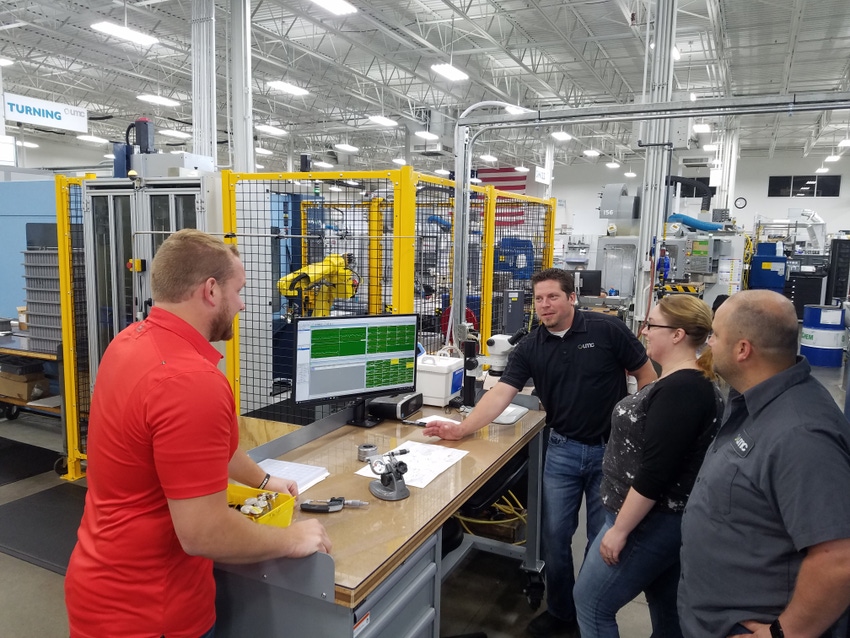A team approach to design offers many benefits, and one member of that team—a machinist—can provide valuable insight.
June 25, 2018

Producing a successful part requires a process that transforms raw materials into a final product that satisfies design requirements while taking into account both technological and geometric constraints. But, more than that, a truly successful process will also be cost effective for the business.
Striking a balance between meeting requirements and reducing production costs requires a multi-perspective view. There isn’t a better way to design a beautiful part that misuses resources than by ignoring the viewpoint of a machinist.
Engineers and machinists tend to have different backgrounds, interests, and perspectives on the manufacturing process. These differences can lead to misunderstandings and miscommunication. I have been fortunate enough to work in both engineering and machining roles and understand the frustrations on both sides.
As engineers, we’re responsible for translating the customer’s prints and specs into a method, programs, and an inspection plan that work flawlessly. It requires a lot of time as well as tremendous attention to detail, creativity, and problem solving to design a process for manufacturing a complex part. Opening up that work to feedback and possible criticism is tough. But to get the best results, we must balance confidence with curiosity and remember that no one person holds all of the answers.
We all have blind spots, and the beauty of a cohesive team is that different perspectives come together to create a complete picture, a more accurate plan, and a better product. Here are just a few reasons why you should consider—and seek—the perspective of a machinist.
Efficiency and Simplicity
When machinists get a sketch, they immediately look for ways to avoid unnecessary steps and will often challenge features, specs, and tolerances that seem extreme or out of the norm. They know that if they can simplify, they can save time and money while reducing the chance for error. Taking the process onto the floor, the machinist knows that an adjustment that spares a mere second or two can add up to significant savings over the life of the project. The machinist is looking for opportunities to ensure that the product can be efficiently, and cost effectively, manufactured.
Maximized Machines
While the engineer is examining the geometry of the part and statistics of the process, the machinist focuses on what’s happening inside the machine. It’s the intimate understanding of each machine’s capabilities and limitations that allows the machinist to know how to make the setup and production run as successful as possible and how a part should be held to ensure access and clearance at every orientation. Consulting with a machinist helps you choose the best tools for each specific area of the part so they can be easily adjusted to blend. The machinist might also suggest a different way to introduce the tool to the part or suggest coming in from a different angle to achieve better results with less part movement.
Options and Ideas
Collaborating with machinists opens your eyes to new design challenges and more creative ways to address them. A machinist can help you think about availability of tooling and about the possible wear and tear on that tooling over time. By thinking from a machinist’s perspective, you can anticipate design elements that might cause spindle crashes or that might prevent a process from being able to be run unattended.
A great way to open up communication between machining and engineering is to ask for feedback on an operation sketch that clearly outlines what you’re thinking. Machinists appreciate being able to see how you anticipate the process coming together. Although this extra step may seem like a hassle, the more clarity you can create before the part is in the machine, the less machine time you’ll burn during setup.
In addition to a sketch, it’s helpful to empower machinists with simulation software, like Vericut, so that they can prove out processes and ideas before going through a complete machine setup and first-time run.
Superior Sequencing
A machinist might see that an alternate order of operations makes more sense, or suggest that specific features be machined together. For example, maybe after cutting a pocket, you could reach through to machine the other side without flipping the part.
The machinist knows how parts move through the machine and throughout the floor and can help identify opportunities to save valuable time and optimize resources. They can also suggest changes that might allow for things like easier inspection or in machine deburring and finishing.
The Future is Collaborative
Working in manufacturing requires an ever-growing library of skills and knowledge. From new programs and methods to tools and measuring and inspection strategies, it is impossible for even the most experienced engineer to have all of the information needed to develop the most innovative solution possible. And that’s not where we should put our energy.
The most successful engineers of the future won’t be the ones eager to prove their designs are the best, but the ones who are most willing to rely on the experience and expertise of a team to make their work even better.
About the Author(s)
You May Also Like


